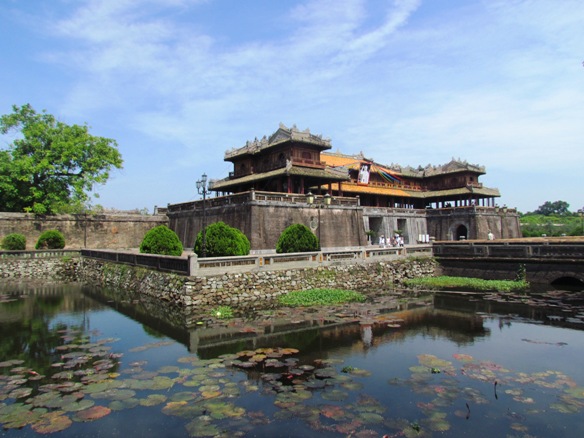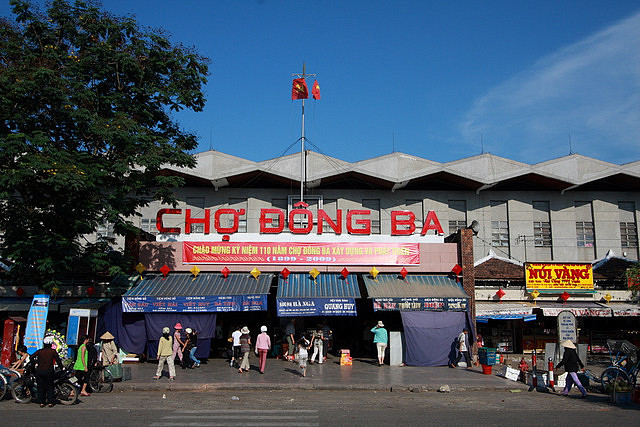Somewhat surprisingly Vietnam’s central cities aren’t on every traveller’s radar even though they are home to some of Vietnam’s most interesting architecture and history. Located on the banks of the Perfume River, Hue is home to a variety of war-torn temples, tombs and palaces, many of which were the homes and places of worship of Nguyen-era emperors. Many of the buildings and structures in Hue are still quite damaged, giving it the feel of a modern-day Pompeii, despite mass tourism. However, there have been some efforts to restore buildings in Hue since 1990 when the area was declared a World Heritage site.
Don’t miss out, make sure you include a trip to Hue in the North Central Coast district on your Vietnam travel itinerary. Hue sits in the Thua Thien Province and is about 700 km south of Hanoi and about 1,100 km north of Ho Chi Minh City, aka Saigon. And Vietnam has just been named as the fastest growing tourist destination.
Forbidden City: Lies on the northern shore of the Perfume River just a 15-minute walk from the Hue Backpackers’ Hostel. At the entrance of the Ngan gate into the Citadel are the Nine Holy Cannons cast from melted down bronze wares from the Tay Son dynasty. The cannons are named after the four seasons and five elements (metal, earth, wood, water and fire) and are known as the “Holy Invincible Generals”. They have never been used for military purposes and are the guardian spirits of the Citadel.
Thien Mu Pagoda: Also on the north shore of the Perfume River about 3km from the Citadel. You can get there by dragon boat along the river, or for those feeling more energetic, a pleasant bicycle ride. The Thien Mu pagoda is regarded as the unofficial symbol of the former imperial capital. Today it is the home of the Austin motor vehicle which drove Thich Quang Duc to his self-immolation in Saigon in 1963 in protest against the Diem regime. It is still home to many monks and a holy site visited by many everyday.
>>>A comprehensive list of things to do in Hanoi, Vietnam. Includes all the major sights and activities in and around Hanoi.
Tombs of the Emperors: 7 tombs in all scatter the countryside around Hue and are monuments to 9 of the 13 rulers of the Nguyen Dynasty, usually built and designed during the emperor’s lifetime. The 3 most visited are Minh Mang, Tu Duc and Khai Dinh. The remaining 4 are less visited but still have interesting features, with Duc Duc, Thanh Thai and Duy Tan being housed in the same tomb.
Japanese Bridge: Named because of its resemblence to the Japanese Bridge in Hoi An. Its construction was initiated by Tran Thi Dao, the wife of a high ranking Mandarin in the court of Emperor Le Hien Tong, sometime between 1740 and 1746. Originally it was built to offer better transportation and communication for the village that lines either side of the canal. In 1925 Emperor Khai Dinh ordered the villagers to erect an altar dedicated to Tran Thi Dao on the bridge. Many locals still travel to the town to visit her tomb.
>>>Things to do in Sapa Vietnam
Dong Ba Markets: The largest market place in central Vietnam, this is definitely a place to visit to immerse yourself in the local culture. Tourists can see all the typical features of a traditional Vietnamese market, such as, the sampan landing, the bus station and the bazaars. Dong Ba market is considered a paradise for snapshots of daily activities as well as for shopping with everything from souvenir items to bronze goods, Hue sesame sweetmeat, conical poem hats, just to name a few. Should you find interest in Vietnamese food or culture, you’d better come here to explore.





